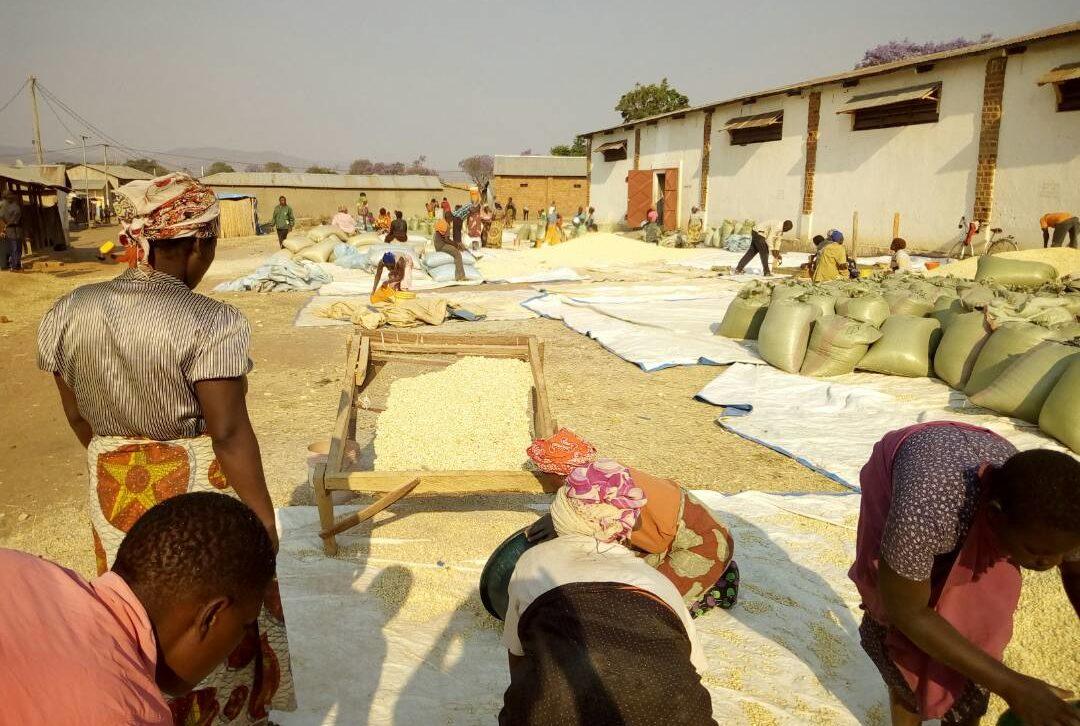Nokia spinoff Sibesonke serves East-African farmers

Although smartphones are taking off in cities, text-based data transfer that does not require internet access is still very useful in the country.
In Tanzania, farmers can check the weather or the price of products using a basic phone – but are unlikely to know that the service is based on a Nokia spinoff.
In the 2000s, two friends Uwe Schwarz and Timo Alakoski developed, within Nokia Siemens Network, business ideas for the emerging markets based on the USSD protocol. USSD enables internet-style data transfer with basic phones with no internet connectivity.
In April 2009, Nokia reformed its business activities and changed its operations. USSD no longer fitted into the new business model, but the developers were given a chance to keep their idea and continue with it within their own company. Schwarz and Alakoski discussed the option and decided to set up Sibesonke.
From South-Africa to East-Africa
Initially, Sibesonke tested different applications in South-Africa and looked for markets there. They offered services connected to the Football World Cup as well as an anonymous chat room for HIV positive people to chat with their peers.
Their mobile services in South-Africa showed promise, and the company received awards: Sibesonke won start-up event Slush’s pitching competition in 2009 and the pan-African AfricaCom’s innovation award in 2010.
However, it quickly became apparent that there were even more suitable markets elsewhere. The South-African mobile communications company Vodacom encouraged Sibesonke to move to East-Africa. In March 2013, Sibesonke published its cooperation agreement with the Ministry of Agriculture, Food Security and Cooperatives as well as Livestock and Fisheries Ministry in Tanzania.
“We are now concentrating completely on the agriculture business,” Schwarz says.
The market exists already: for example, according to the BNC Veterinary Services research centre, households in the livestock farming regions had at least one mobile phone in 2016, but only seven per cent of them were smartphones. On a national level, 60 per cent of Tanzanians own a mobile phone, but only 30 per cent of the population have internet access.
Internet or not, a variety of different mobile services exist for people in the countryside, and they are widely used – cattle breeders, for example, use them to check prices and to identify diseases.
Now Sibesonke’s mFarming service (mKilimo in Swahili), in collaboration with ministries and other cooperation partners, offers farmers information tailored to their needs on topics such as the weather, fertilizers and pests. As data connections improve, farmers will be able to take a picture of, say, plant disease and send it to an expert for analysis.
The availability of information of agricultural product prices helps farmers in their planning: cities’ market places are often far away and expensive to get to from the production regions. Topical information helps farmers decide when to head into town to sell their harvest.
“The idea is to help farmers increase their productivity and income: to achieve bigger harvests and better prices per sack,” Schwarz says.
Advertising income, user fees and consulting
Sibesonke collects its income from multiple streams. Some of the mFarming service’s information is available to the users free-of-charge, but some can only be accessed through the premium service, which is subject to a fee. The system also includes advertisements on fodder and pesticides, for example. Sibesonke made a profit for the first time in 2017.
The company has also received government funding for preliminary investigations, partner identification, staff training and further development of services: from Finnpartnership and the Finnish Funding Agency for Technology and Innovation, Tekes’ BEAM programme, which is now part of Business Finland. According to Schwarz, the support has been hugely important to the company.
Furthermore, Sibesonke provides consultation and sells its technical solutions to other operators: well-known global organisations and private companies that wish to solve smallholders’ problems in East-Africa.
“Many private companies see untapped potential in farmers,” Schwarz says.“For example, very few smallholders currently use any fertilizers. If more did, there could be enough food to exported it, whilst now the continent needs to import food.”
Nokia experience spurred on
Schwarz and Alakoski worked for Nokia when the company started developing products specifically for the emerging markets. Various things were tested to see what worked and what did not. The department next door were developing educational games for learning maths, whilst another department was working on Nokia Life Tools, which provided information on health, agriculture, education and entertainment.
The prepaid system, which many Finns recognise, was originally created for the developing countries.
Since then, Nokia crashed, and many small, innovative companies have emerged from its ruins. Sibesonke was a company in its own right by then. The background in Nokia provided Sibesonke’s founders knowledge of the emerging markets and products which they had been developing for a long time under the wing of a large company. Nowadays, global companies come to them for information when they direct their interest at the African agricultural markets.
“Many really big companies are battling with the same issues as Nokia did in Africa 10 to 15 years ago. Companies are interested in the African multi-billion people markets, especially since several countries’ budgets are growing at the rate of seven per cent a year,” Schwarz notes.
“It feels as if everyone had decided that now is the moment to go to Africa, but no one really knows what you should do there and how.”
It isn’t an easy market for a new-comer. Uwe Schwarz and Sibesonke’s answer is persistent work: people’s trust is achieved by gradually building company awareness and brand. It is also important to have a physical presence: Schwarz travels to Tanzania and other East-African countries every second month.
Ten years on the continent and five years in East-Africa have provided a lot of experience but also many users. In Tanzania, the company has had 2.3 million unique users since late 2012. The number of daily users varies between four and six thousand depending on the season. There is still plenty of room for growth as well.
“There are more than 50 million people in Tanzania; agriculture provides livelihood for 70 per cent of those,” Schwarz calculates.
“There are millions of people who would benefit from the information we offer.”
Source: Pasi Nokelainen & Esa Salminen: Afrikan valloittajat (Avain kustannus 2018)
Share on social media


